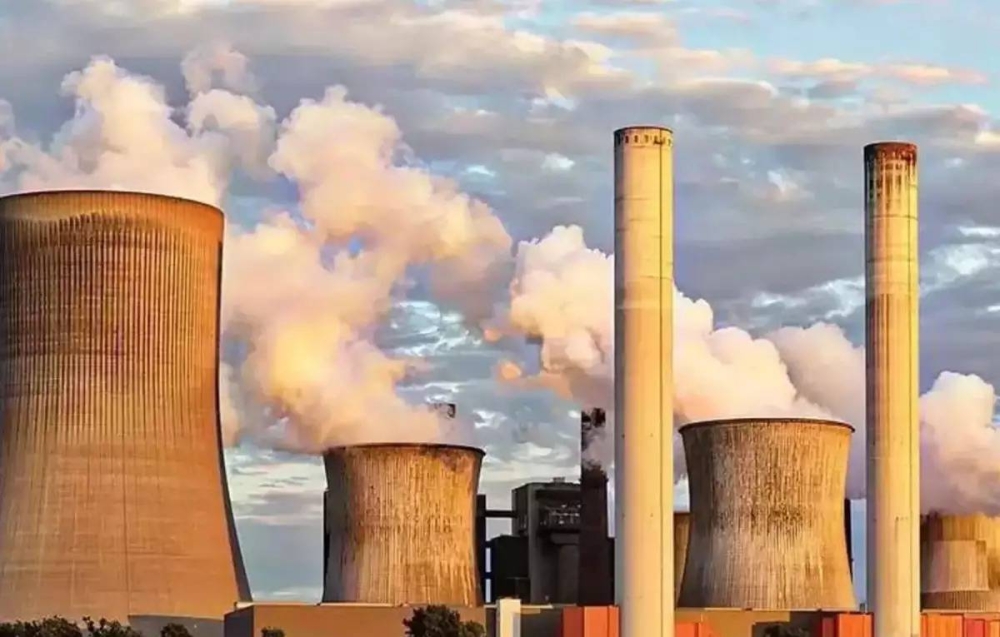
Sun-soaked Australia's lofty renewable energy ambitions were given a harsh reality check yesterday, as looming electricity shortfalls delayed the long-awaited shutdown of the country's largest coal-fired power plant.
The hulking, heavily polluting Eraring power plant - about a two-hour drive north of Sydney - was slated for closure in 2025 but will be kept ticking over for at least two more years while renewables are ramped up.
"The best way to undermine the renewable energy transition is to have the lights go out in 2025. I'm not letting that happen," New South Wales Premier Chris Minns announced yesterday.
His backflip highlighted the chasm between Australia's reality and its goal of having renewables supply 82% of electricity by 2030.
The move was deeply unpopular with environmentalists.
"Summers in New South Wales are now characterised by unprecedented floods, heatwaves or deadly fires and this extreme weather is exacerbated by extending the life of fossil fuels like coal," the Australian Conservation Foundation said.
At the centre of Australia's most recent government budget was a sweeping set of policies pitched at making the country a global "renewable energy superpower".
Australia has had some success in scaling up renewable energy, and its residents are among the world's most enthusiastic adopters of household solar panels.
In 2022, renewables made up 32% of Australia's total electricity generation - compared to coal which contributed 47%, according to the latest government data.
"Coal is exiting our energy system at a record pace," said Clean Energy Council chief executive Kane Thornton, who believes only renewables can replace the existing regime while avoiding blackouts and power price hikes.
But a slower-than-expected rollout of renewable energy projects has prompted Australia's energy market regulator to warn of likely shortages and blackouts in the coming years.
One proposed solution has been to extend the life of coal-fired power stations -- some already more than 40 years old.
But industry and a handful of conservative politicians are also calling for Australia to revisit a decades-old ban on nuclear power.
Although Australia has 33% of the world's uranium deposits, nuclear power generation has been banned since 1998.
Advocates like Jaz Diab, managing director of Global Nuclear Security Partners, believe advances in small-scale reactors and non-water-cooled reactors should prompt a rethink.
"I actually think in Australia the first movers and shakers will be industry with things like small modular reactors," she said pointing to a possible first use in remote mining sites.
"Unfortunately, politicians are grabbing onto it, and making it a political decision as opposed to allowing (Australians) to be engaged in their energy policy."
But Australia's national science agency, the CSIRO, has found the cost of a large-scale nuclear reactor in Australia could exceed US$10bn and take 15 years to build.
CSIRO's chief energy economist Paul Graham said nuclear was not "economically competitive with renewables".
His agency recently conducted a study which showed solar, wind and batteries would be cheaper and more reliable sources of renewable energy.
In many cases, nuclear makes sense for energy-deficient countries that had no domestic renewable options, such as Japan, energy analyst Tim Buckley said.
"Nuclear has no future in Australia," he said. "Australia has not continuously built it, we have none of the skillset, none of the engineering, and none of the capacity for nuclear."
Buckley warned if Australia pursued nuclear it would be years until it could be used reliability. "That would mean 15 years of blackouts," he said.
Renewables advocates say what is needed is a faster rollout and fewer political diversions.
Nicki Hutley, an economist with the Climate Council, said four years of back-to-back natural disasters -- drought, bushfires and floods -- had reinforced the need for renewable energy.
"We finally got to the point where the science has triumphed, but it has taken a long time," she said.
"It is not about choosing between the climate or the economy, it can be climate and the economy."
